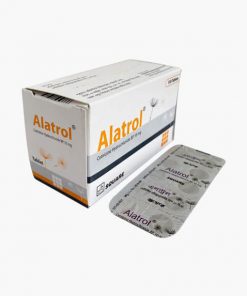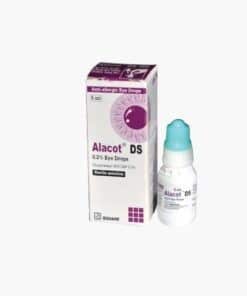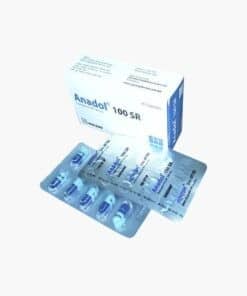Ramace 5 | Tablet | 10 pcs
৳ 80.60
Brand Name: Ramace Tablet
Generic: Ramipril
5 mg
Manufacturer: Opsonin Pharma Ltd.
Unit Price: ৳ 8.06 (3 x 10: ৳ 241.80)
Strip Price: ৳ 80.60
Indications
Ramiprilis indicated in the following cases:
- Mild to severe hypertension
- Congestive Heart failure.
- To reduce the risk of stroke, myocardial infarction and death from cardiovascular events in patients with a history of cardiovascular disease.
- Proteinuric non-diabetic nephropathy.
Therapeutic Class
Angiotensin-converting enzyme (ACE) inhibitors
Pharmacology
Dosage & Administration
Dosage of Ramipril must be adjusted according to the patient tolerance and response.
Hypertension: For the management of hypertension in adults not receiving a diuretic, the usual initial dose of Ramipril is 1.25 – 2.5 mg once daily. Dosage generally is adjusted no more rapidly than at 2 week intervals. The usual maintenance dosage in adults is 2.5 – 20 mg daily given as a single dose or in 2 divided doses daily. If BP is not controlled with Ramipril alone, a diuretic may be added.
Congestive heart failure after myocardial infarction: In this case, Ramipril therapy may be initiated as early as 2 days after myocardial infarction. An initial dose of 2.5 mg twice daily is recommended, but if hypotension occurs, dose should be reduced to 1.25 mg twice daily. Therapy is then titrated to a target daily dose of 5 mg twice daily.
Prevention of major cardiovascular events: In this case, the recommended dose is 2.5 mg once daily for the first week of therapy and 5 mg once daily for the following 3 weeks; dosage then may be increased, as tolerated, to a maintenance dosage of 10 mg once daily.
Interaction
With Diuretics: Patients on diuretics, especially those in whom diuretic therapy was recently instituted, may occasionally experience an excessive reduction of blood pressure after initiation of therapy with ramipril.
With Potassium Supplements and Potassium-sparing Diuretics: Ramipril can attenuate potassium loss caused by thiazide diuretics. Potassium-sparing diuretics (spironolactone, amiloride, triamterene, and others) or potassium supplements can increase the risk of hyperkalemia.
Other: Neither ramipril nor its metabolites have been found to interact with food, digoxin, antacid, furosemide, cimetidine, indomethacin, and simvastatin. The combination of ramipril and propranolol showed no adverse effects on dynamic parameters (blood pressure and heart rate). The co-administration of ramipril and warfarin did not adversely affect the anticoagulant effects of the latter drug.
Contraindications
Side Effects
Pregnancy & Lactation
Precautions & Warnings
Use in Special Populations
Dosage in renal impairment: For the patients with hypertension and renal impairment, the recommended initial dose is 1.25 mg Ramipril once daily. Subsequent dosage should be titrated according to individual tolerance and BP response, up to a maximum of 5 mg daily. For the patients with heart failure and renal impairment, the recommended dose is 1.25 mg once daily. The dose may be increased to 1.25 mg twice daily and up to a maximum dose of 2.5 mg twice daily depending upon clinical response and tolerability.
Use in children: No information is yet available on the use of Ramipril in children.
Overdose Effects
Storage Conditions
| Generic Name | Ramipril |
|---|---|
| Size | 5 mg |
Only logged in customers who have purchased this product may leave a review.











Reviews
There are no reviews yet.